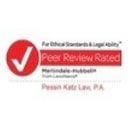By: Chantelle M. Custodio, Esquire ccustodio@pklaw.com
The U.S. Supreme Court in Montanile v. Bd. of Trs. of Nat. Elevator Indus. Health Benefit Plan, U.S., No. 14-723, 1/20/2016,considered what happens when a participant in an employee benefits plan under the Employee Retirement Income Security Act of 1974 (ERISA) obtains a settlement fund from a third party but spends the settlement on nontraceable items such as services and food. The facts of the case involve Petitioner, Robert Montanile who was a participant in a health benefits plan that provided for certain medical expenses incurred by the participants. Under the terms of disbursement, the plan could demand reimbursement when a participant recovers money from a third party.
In December of 2008, Montanile was involved in an auto accident. He sustained serious injuries and as a result the plan paid approximately $121,044 in medical care. Montanile filed a negligence claim against the driver and also made a claim for uninsured motorist benefits under his own car insurance. Montanile obtained a $500,000 settlement of which he paid $260,000 to his attorneys for services and cost advances. The plan’s Board of Trustees sought reimbursement for the plan paid medical expenses and Montanile’s attorney argued they were not entitled to the money. Negotiations broke down and ultimately Montanile’s attorney released the remaining funds ($240,000) to Montanile. Before releasing the funds, Montanile’s attorney gave the Board of Trustees notice of his plans to disburse the funds unless they rejected within 14 days. No objection was made. Six months later, the board of trustees sued Montanile asking the court to enforce an equitable lien upon any settlement funds or any property in Montanile’s actual or constructive possession. The District Court granted summary judgment to the Board of Trustees and the 11th Circuit affirmed. The Supreme Court reversed the 11th Circuit’s ruling and remanded for further proceedings.
The Court granted cert to resolve a conflict among the Circuits over whether an ERISA fiduciary can enforce an equitable lien against a defendant’s general assets in situations where the participant has already spent the amounts in question. The applicable ERISA provision authorizes plan fiduciaries, like the Board of Trustees, to bring civil suits “to obtain other appropriate equitable relief . . . to enforce . . . the terms of the plan.” 29 U.S. C. section 1132(a)(3). Based on precedent, “equitable relief” is limited to relief that was typically available in equity, when the distinction between law and equity was recognized by courts. In the 8-1 ruling, the Court held that if the beneficiary has already spent the settlement funds on “nontraceable” goods such as food and services, then the employer-sponsored health insurer cannot seek a lien against their general assets because the relief sought is an action at law and the applicable statute only provides for an action in equity as a remedy to obtain the funds.
The Court distinguished this case from several other cases and thus this is arguably a limited ruling. The Court further noted that over the years, plans have developed safeguards against participants’ efforts to evade reimbursement including tracking expensive claims, requiring participants to notify the plan of legal process against third parties and giving the plan a right of subrogation. Potential impacts could be that plan fiduciaries will file liens or will file suit to immediately enforce their subrogation rights. Plaintiffs may spend their settlements quickly on things wholly unrelated to what the funds are intended for, i.e. durable medical equipment, accommodations, medical care, etc., or place their funds in a protected special needs trust. The opinion cites a prior case where the Court held they could not bring suit to obtain judgment against the trustees for funds placed in trust. While it is unlikely that parties will spend their money on homes, other real estate or vehicles as it would be too easily traceable, they may attempt to “give” money away to family, likely giving rise to fraudulent conveyance actions. Settlement funds be alternatively paid to a party spouse based on loss of consortium claims rather than the injured party because the plan likely cannot bring suit against a non-contracting/non-participant party. Plan fiduciaries may also start doing a better job of tracking cases where they have paid large medical bills and push to obtain information from counsel about the status of litigation and settlements. Regardless of which of these theoretical implications take hold, the Court made it clear that the onus is on the plan to protect its right to recover.
Ms. Custodio is an attorney with Pessin Katz Law, P.A. and is a member of the firm’s Medical Malpractice Group. She represents hospitals, physicians, nurses and other health care providers throughout the State of Maryland and the District of Columbia in defending complex medical malpractice and personal injury claims. Additionally, she has represented clients in various tort-related litigation and business owners in contract dispute and business tort matters. Ms. Custodio can be reached at 410- 339-6776 or ccustodio@pklaw.com.











